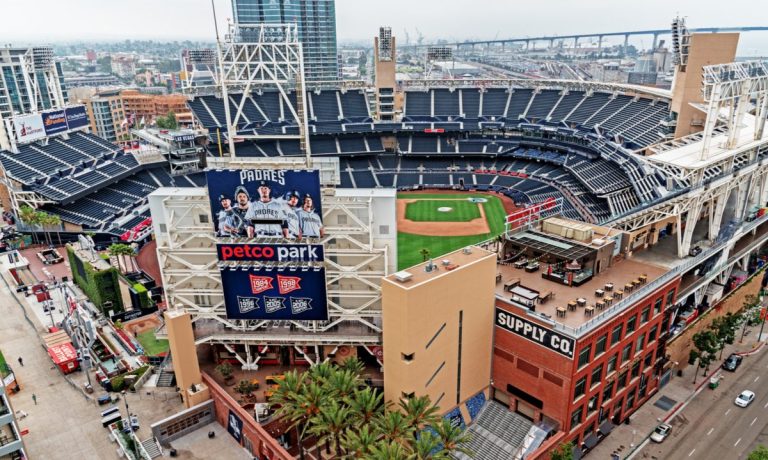MLB, NFL Venues Digitize Concessions With Next-Gen Self-Service

The race to digitize live event concessions continues, this time with a push to make it easier for stadiums and arenas to implement self-service kiosks.
Retail technology company Gallery Carts has announced a partnership with digital component manufacturer Falkbuilt to make it easier to build grab-and-go kiosks for live event venues. The technology is up and running at the MLB’s San Diego Padres’ Petco Park and is soon to go live at NFL team stadiums Nissan Stadium (home of the Tennessee Titans) and Allegiant Stadium (home of the Las Vegas Raiders).
“This partnership allows us to provide next-level construction technology that will dramatically decrease the time it takes for grab-and-go and self-serve companies to go from design to build so they can start earning revenue more quickly,” Gallery Carts President Dan Gallery V said in a statement. “Falkbuilt’s comprehensive technology stack helps our clients avoid many traditional construction challenges — from supply chain to inflation and labor shortages — so they can go from placing an order with us to having an operational retail space in record time.”
Throughout this year, sporting arenas have been bringing their concessions into the 21st century with new technologies. Leading players from Amazon to Instacart have been stepping up the checkout experience with next-gen self-service systems.
Read more: Amazon Just Walk Out Technology Comes to Seattle’s T-Mobile Park
Instacart Brings AI Self-Service Checkout to Fenway Park
By the Numbers
Consumers want to take transactions into their own hands. PYMNTS research from last year’s study “Today’s Self-Service Shopping Journey: The New Retail Expectation,” created in collaboration with Toshiba, for which PYMNTS surveyed over 2,000 U.S. consumers about their shopping behavior, found that a third of grocery customers used self-checkout options for their most recent in-store purchase.
See more: Consumers Want Self-Service Checkout Options, but Rarely Get to Use Them
Additionally, two-thirds of these shoppers opted for self-checkout because it was faster than checking out with a cashier, and half said they chose the option because there was no line for self-checkout. The greatest share of these self-servers reported being interested in more self-service scanning and bagging options, while a slightly smaller share reported wanting more smart shopping cart and scan-and-pay options.
What Insiders Are Saying
As self-checkout options become more widely available, consumers are coming to expect that level of speed and convenience.
“It’s clear that users prefer to have a contactless experience,” Ariel Shemesh, co-founder and CEO of retail computer vision provider KanduAI, told PYMNTS in an interview last year, reflecting on the changes that have happened in the space since the start of the pandemic. “Self-checkout definitely got a lot of users who used to go to the cashiers, and they didn’t really mind waiting in line, but they got acquainted with this technology and now they basically demand it.”
Read more: 3 Friction Points Slowing the Adoption of Self-Checkout for Grocers
Additionally, as stadiums become increasingly tech-enabled, Sandeep Satish, head of the sports and entertainment analytics practice at restaurant and hospitality company Levy and its technology and data insights group E15, predicted that all in-venue transactions could become cashier-less in the years ahead.
“I think you’re going to see a couple of venues that will only be [frictionless] … where you have the ability to tap your credit card or tap your app before you even enter the stadium or venue,” he said. “Think about how powerful that’s going to be, where you can walk to whatever food hall, whatever concept, whatever merchandise store, grab what you want and walk back to your seat and really not worry about that process.”
See more: Live Event Venues Reduce Audience FOMO With Frictionless Concessions